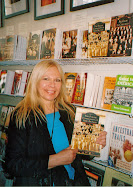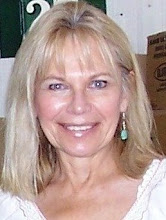The questions never end in genealogy. Fortunately, the array of resources to answer those questions is nearly endless as well—depending on how hard you’re willing to dig for them and, in Polish genealogy, how many languages you’re willing to deal with.
I have two favorite resources for historic background information about specific towns and villages in the Lida area. Both of these very comprehensive gazetteers were published well before Poland’s borders shifted as a result of World War II, so they include lands now in Lithuania, Belarus, and Ukraine. Even just a decade or so ago, these gazetteers could be found only on the shelves of major libraries, or accessed through LDS microfilm. Now, libraries in Poland have made them freely available online. I’ve posted the Web links below, along with some basic info about using these gazetteers.
- Bystrzycki, Tadeusz. Skorowidz miejscowości Rzeczypospolitej Polskiej z oznaczeniem terytorjalnie im właściwych władz i urzędów oraz urządzeń komunikacyjnych = Registry of towns, places, cities in the Polish Republic, with territorial identification of officials, offices, communication possibilities and others from before World War II, 1931. Ostra, Italy: Muggenthaler Library Publishing House, 2000.
- Sulimierski, Filip, Bronisław Chlebowski, and Władysław Walewski. Słownik geograficzny Królestwa Polskiego i innych krajów słowiańskich : Warszawa 1880-1902. T. 1-15 = Geographic Dictionary of the Former Kingdom of Poland and other Slavic Lands. Zbiory XX Wieku Biblioteki Uniwersyteckiej w Warszawie, 35. Warszawa: BUW. Sekcja Dokumentów Wtórnych, 2006.


Skorowidz miejscowości
(Wielkopolska Biblioteka Cyfrowa / Digital Library of Wielkopolska)Skorowidz identifies even the smallest hamlets and villages. In columnar format, it provides the following information for each place-name:
- miejscowosc i jej charakter (locality and its type)
- gmina (district)
- powiat polityczny (political county)
- wojewodztwo (province)
- poczta i telegraf (telefon) (post office and telegraph [telephone])
- stacja kolej. z odlegloscia km. (railway station and distance in kilometers)
- najblizsza linja komunik. autobus z odlegloscia km. (nearest bus transportation line and distance in km.)
- SAD grodzki (city court)
- SAD okregowy (district court)
- urzedy parafialne — rz-kat, gr-kat, wsch-slow, orm-kat, prawosl, ewang, ew-ref. (parish offices — Roman Catholic, Greek Catholic, Eastern Slavic rite, Armenian Catholic, Orthodox, Evangelical/Lutheran, Evangelical Reformed)
You might be surprised how many small villages share the same name in the historic territories of Poland. Skorowidz lists about 80 villages named Zarzecze, which is not even close to being one of the more common place-names in an area that was, at its most extensive, about the size of the American Southwest. Choosing the correct Zarzecze, for example, requires the genealogist to know at least which province (wojewodztwo, gubernia) their ancestor came from and, better yet, what district (powiat) within that province.
The final column in a Skorowidz entry, the parish, is where you hit pay dirt for further research. To access church baptismal, marriage, and death records, you have to know what parish your family belonged to. If you use LDS microfilms for your research, knowing the parish is crucial, because LDS indexes church films by parish seat.
For example, my maternal Prokopowicz family resided in the small village of Kozarezy, which was served by the Roman Catholic parish church in Iszczolna. To locate baptismal, marriage, and death records, I must search the LDS library holdings for Iszczolna parish, not for Kozarezy village.
The “Edition” menu on the left side of the Skorowidz screen provides several options, notably to view content (this requires using a DjVu plug-in), or to download and save the entire gazetteer to your own computer. I use Skorowidz a lot, so I have downloaded it to a flash drive. The download comprises almost 2,100 individual LizardTech DjVu files, images more or less akin to PDFs. The files are named only by number, so finding the file for a specific place-name can take some time. As I use these files, I rename them with the first place-name on the page. Someday (and I’m not holding my breath here!) I may have all of these files alphabetically named.
Slownik geograficzny
http://www.mimuw.edu.pl/polszczyzna/SGKPi/
(University of Warsaw Library)
http://dir.icm.edu.pl/pl/Slownik_geograficzny/
(University of Warsaw Interdisciplinary Centre for Mathematical and Computational Modeling)
Slownik is a massive gazetteer that identifies even the smallest human settlement and geographic feature of “the Former Kingdom of Poland and other Slavic Lands.” The print edition comprises 17 separate volumes (numbered 1-15 with a 2-part addendum), each the size of a city phone book. It took three men over a decade to research and compile all this information, which encompasses historic development, prominent individuals, population, religious affiliation, natural resources, occupations and businesses, major events, and more.
(University of Warsaw Library)
http://dir.icm.edu.pl/pl/Slownik_geograficzny/
(University of Warsaw Interdisciplinary Centre for Mathematical and Computational Modeling)
Slownik is a massive gazetteer that identifies even the smallest human settlement and geographic feature of “the Former Kingdom of Poland and other Slavic Lands.” The print edition comprises 17 separate volumes (numbered 1-15 with a 2-part addendum), each the size of a city phone book. It took three men over a decade to research and compile all this information, which encompasses historic development, prominent individuals, population, religious affiliation, natural resources, occupations and businesses, major events, and more.
Given the size of Poland, even with significant chunks of Lithuania, Belarus, and Ukraine included, the coverage here is simply exhaustive. That said, a village that contained eight houses in 1886 may merit only a three-line description in Slownik. But that in itself seems remarkable to me: the street I grew up on in Worcester had about 15 houses, and no one has ever written even a line about it!
Before exploring Slownik, a visit to the Polish Genealogical Society of America Web link http://www.pgsa.org/Towns/slownik_eng.php is very worthwhile. This provides a detailed explanation of Slownik’s scope of coverage, a breakdown of the range of place-names that each volume covers, and an explanation of the abbreviations commonly used in the text. The latter is particularly helpful in translating a Slownik entry.
Obviously, a printed Slownik page is a nice complement to your maps and related research materials. It’s also nice to have hard copy on hand if you want to translate an entry, especially if it’s lengthy.
Armed with an old Polish dictionary (the older, the better, for translating vocabulary used in the 1890s), I translated the Slownik entries for Radun, Szczuczyn, Ejszyszki, and some of their small satellite villages in the late 1990s. My Radun and Szczuczyn translations (gracefully edited by William F. Hoffman) were published in the Summer 1998 Bulletin of the Polish Genealogical Society of America. My Ejszyszki translation (also edited by Fred Hoffman) was published in the Fall/Winter 1999 issue (volume 1, number 2) of the Lithuanian Global Genealogical Society journal Proteviai. All three of my translations now appear on the PGSA Web site (though the Ejszyszki text ends abruptly and without any acknowledgment to me—szkoda!).Because these translations are lengthy, and because they relate directly to my family research, I will post them in their entirety in my next blog entries.












No comments:
Post a Comment